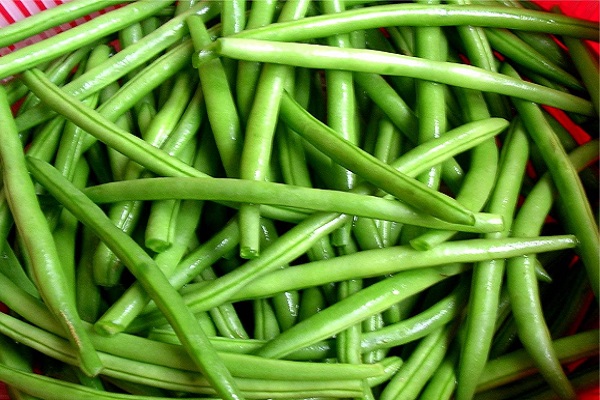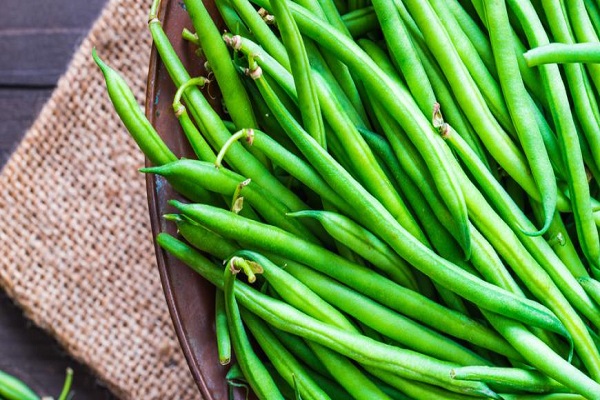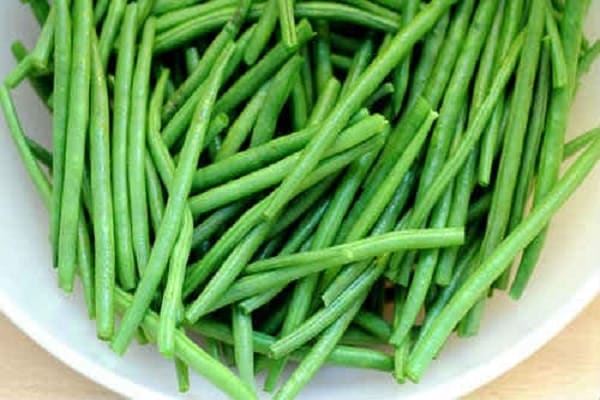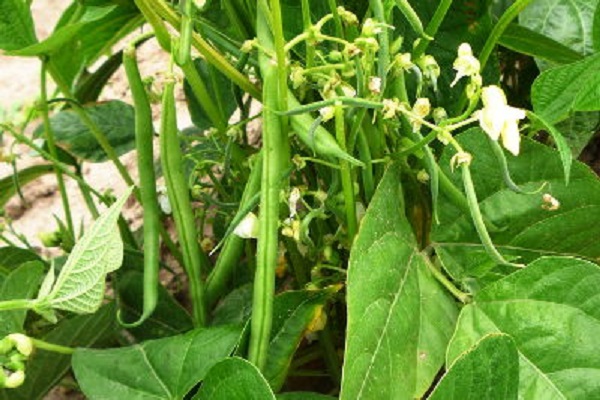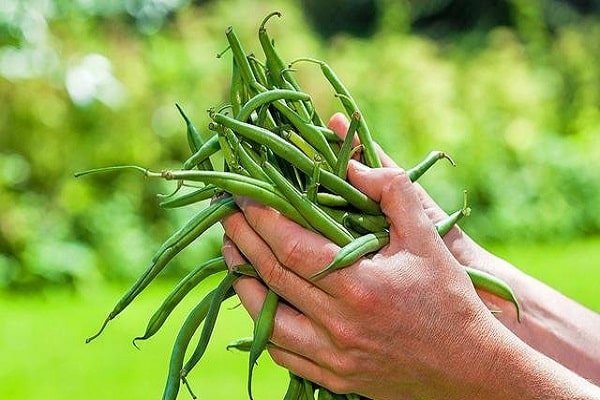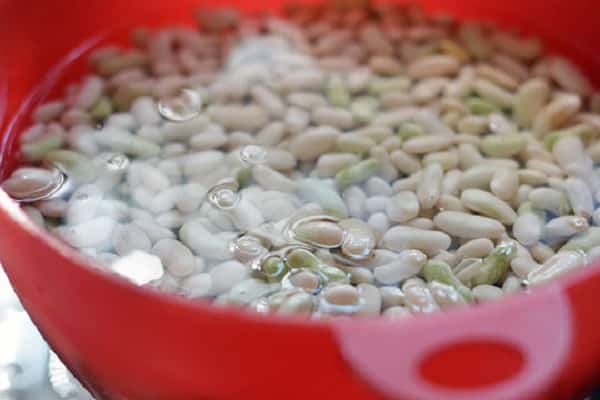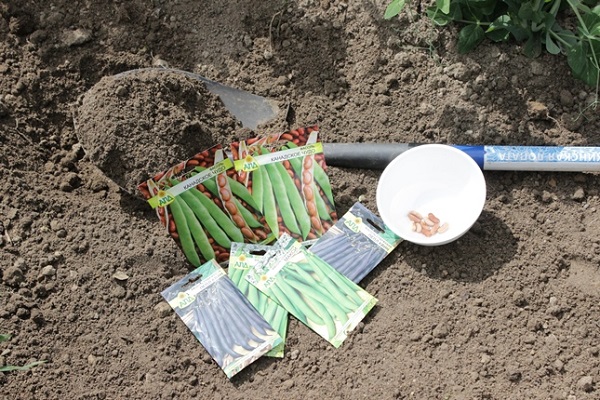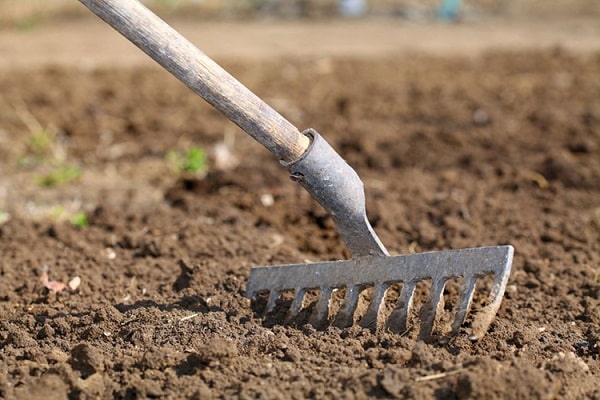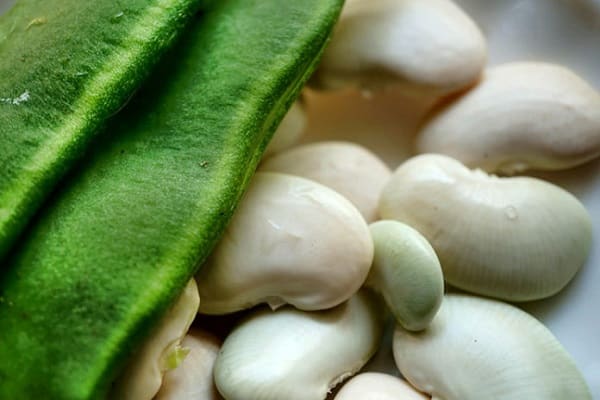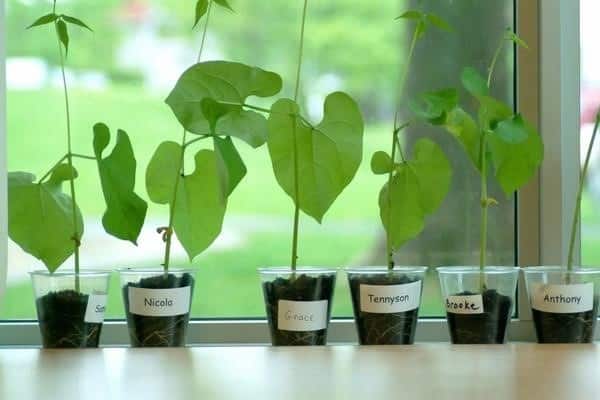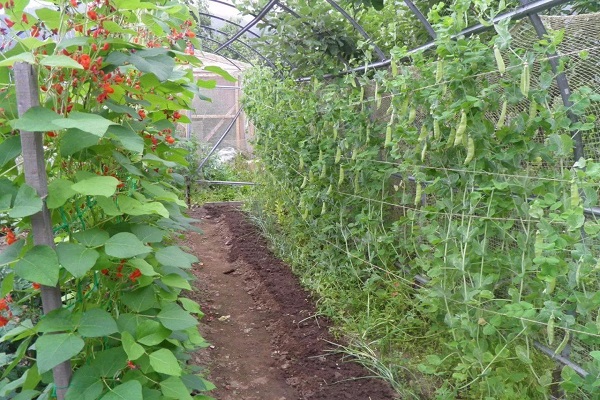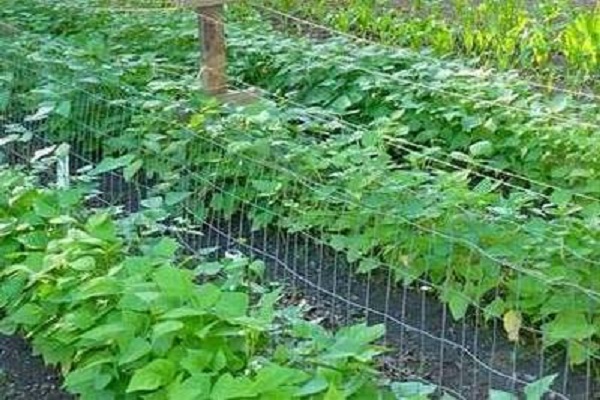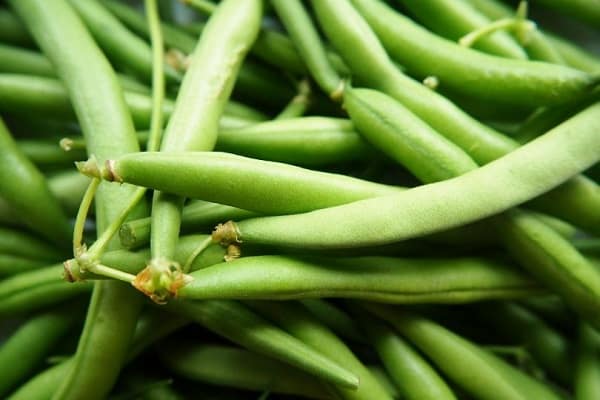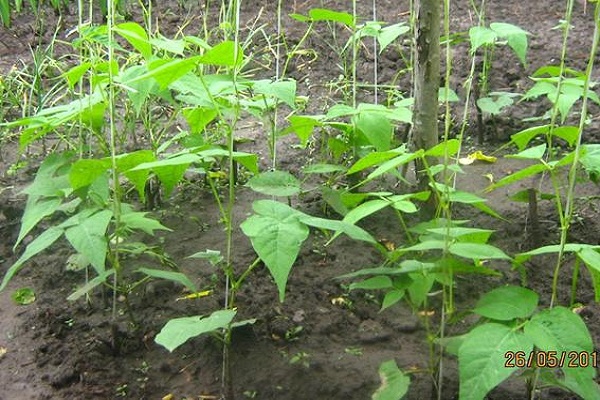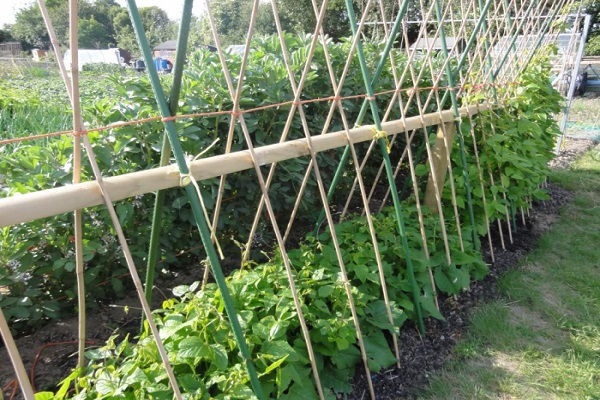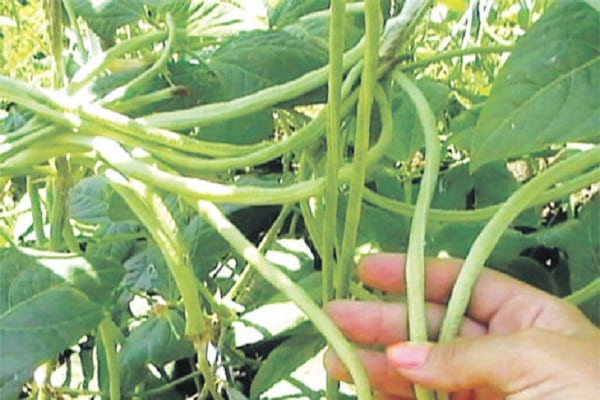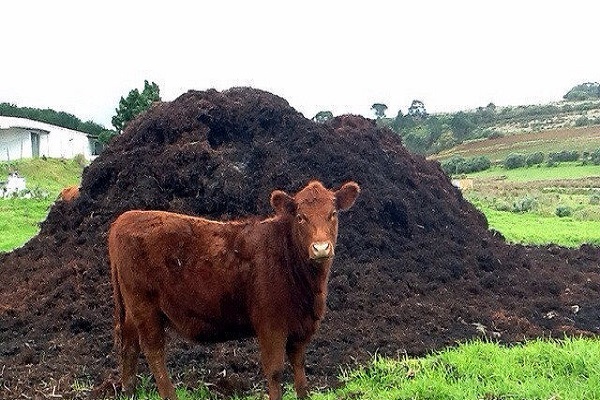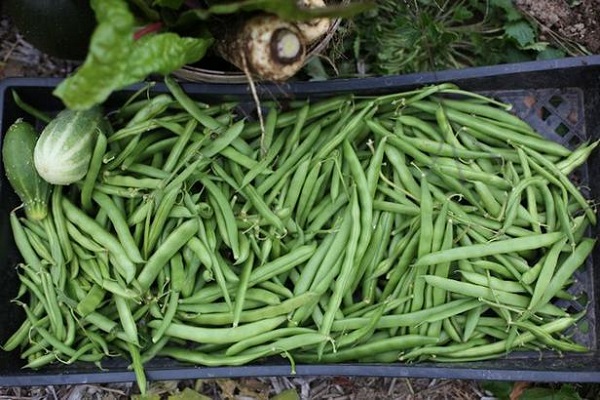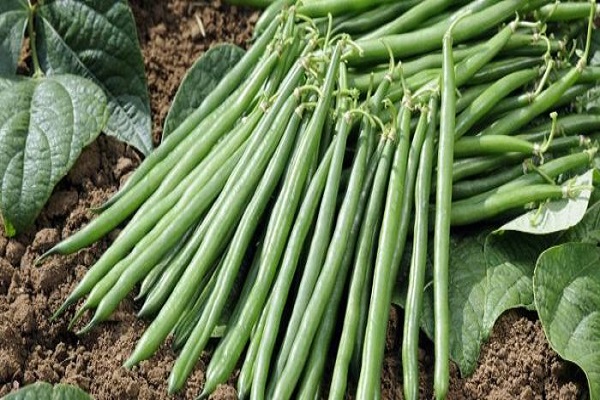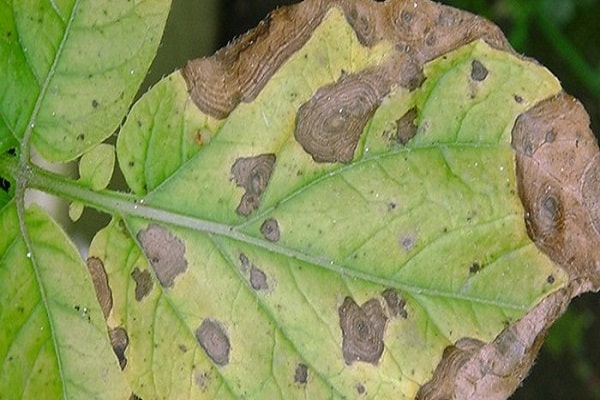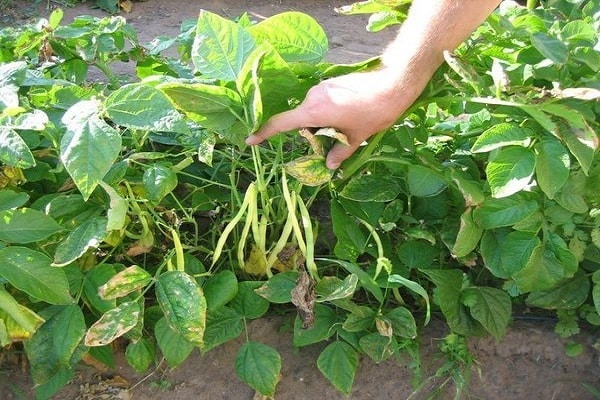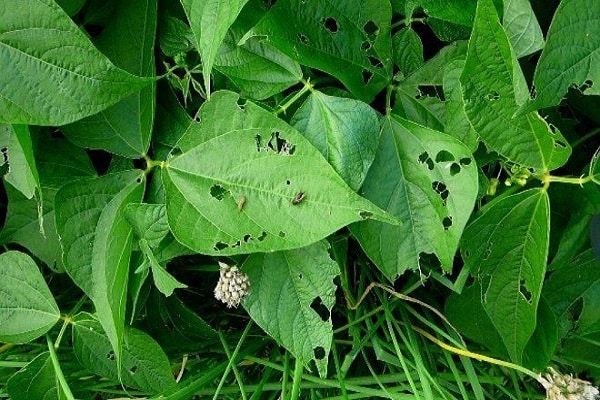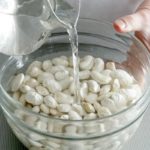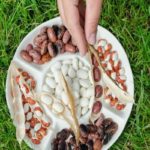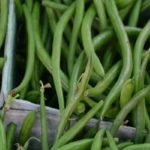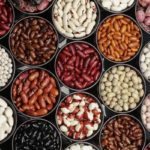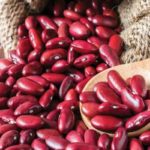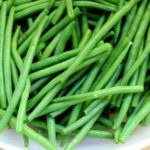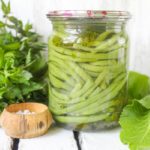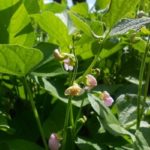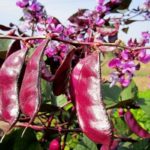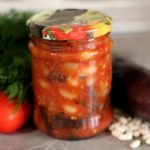Green beans received recognition much later than other varieties. Now it is very popular in cooking. The pods of this crop do not contain coarse fibers and are therefore used whole. Caring for and growing green beans is practically no different from other varieties, but there are still some features.
- Description of popular varieties and existing varieties
- How to choose a variety
- Preliminary seed preparation
- Timing and technology of sowing
- Seat and its preparation
- Growing methods
- At home
- In the greenhouse
- Open ground
- Care Tips
- Watering
- Weeding and loosening
- Support
- Pinching shoots
- Top dressing
- Harvesting
- Diseases and pests - prevention and treatment
Description of popular varieties and existing varieties
Green beans are an annual variety. It is characterized by climbing leaves and bivalve beans, in the middle of which there are large beans. The fruits are partitioned with spongy flaps, which soften during cooking. Green beans are a whole storehouse of useful components, among which protein is the leader.
The culture does not require a lot of light. For a bountiful harvest, 12 hours of daylight is sufficient. The pod varieties are self-pollinating, so several species can be grown in one area.
Green beans come in climbing and bush varieties, early, mid and late ripening.
Grain varieties involve eating only grains as food, since their shell is too hard. Such varieties can be grown in warm climates; they do not ripen in the middle zone. The most popular varieties of grain beans are:
- Chocolate girl. Mid-season plants that reach a height of about 1 meter. The culture is characterized by yellow long fruits.
- Ballad. A medium-ripening bean that is resistant to dry weather. When ripe, light yellow fruits with small purple spots are formed. The value of this variety is that it contains the maximum amount of protein in its composition.
- Ruby. Also a mid-season variety. Characterized by burgundy beans and narrow pods.
Green beans are usually eaten whole. This distinguishes it from shelled varieties, which are unsuitable for whole consumption due to the content of the parchment layer. Many gourmets consider green beans to be the variety with the highest taste. The following varieties of asparagus crops are most often planted in Russia:
- Crane.A variety characterized by compact bushes and fiberless pods with a delicate taste.
- Butter king. A fast-ripening crop with a delicate taste.
- Hell Rem. Climbing bushes with soft pink fruits that taste like mushrooms.
These varieties are also known for their ability to remove excess fluid from the body.
How to choose a variety
Which variety to choose depends on individual desires and climatic conditions. In mid-latitudes, for example, early and mid-season varieties are grown. No more than 130 days are allotted for the ripening of late-ripening varieties.
Climbers are characterized by long pods. They are planted not only to get a good yield, but also to decorate the site. This is due to the fact that the plants have decorative beautiful flowers and flexible stems, which will become a real decoration of any structure.
Bush varieties are characterized by small fruits that are not suitable for consumption. First of all, bush beans are planted as green manure to enrich the soil with nitrogen.
In temperate climates, gardeners prefer to grow the following varieties of green beans:
- Butter king.
- Panther.
- Sachs.
- Purple Queen.
These varieties are characterized by unpretentiousness to soil and care.
Preliminary seed preparation
Before planting the seeds of asparagus beans, pre-sowing preparation is carried out, namely:
- carefully sort through the grains, removing bad and damaged ones;
- soak for 12 hours in water at room temperature;
- Before sowing, immerse the grains in a weak solution of boric acid for several minutes.
Timing and technology of sowing
The crop does not require any special sowing features. Green beans are planted in soil heated to at least 10 degrees.In this case, night frosts should stop completely. As a rule, this is mid to late May. For better germination, the seeds are pre-soaked in water. Some gardeners use a weak solution of potassium permanganate to disinfect the material.
Note! If the soil is sufficiently moist when planting seeds, there is no need to soak them.
To increase resistance to disease, the grains are kept in an aqueous solution of boric acid before planting. Then the seeds are lowered into the holes made, the depth of which is from 3 to 5 cm. For bushy varieties, 10 cm are left in one furrow, and 30 cm between the grooves. Hybrid climbing varieties should be placed at a distance of 20-30 cm from each other, while the distance between rows should not be less than 0.5 m.
Seat and its preparation
They have been preparing the soil for green beans since the fall. No special effort is required for this. Apply standard digging of soil and application of fertilizers. The latter can be used superphosphate, potassium chloride or humus.
On the eve of planting, the area must be re-digged. In case of increased soil viscosity, gardeners add a little sand to it. Before planting beans, the soil is fluffed up with a rake.
Planting green beans in open ground requires mandatory disinfection of the soil using a weak solution of potassium permanganate.
Growing methods
How to grow a crop depends on the characteristics of the variety. Bush varieties with strong stems are planted in rows, the distance between which is at least 20 cm. A staggered planting order is also allowed. Climbing beans with a vine stem require preliminary installation of a support.
Beans can also be planted using seedlings.But in this case, it is important to make sure that there will be no more frosts. Seedlings are planted in the ground only after the onset of complete warmth, otherwise all plants will die.
At home
Growing beans on a windowsill is a less common method. Early varieties are ideal for this purpose. Climbing varieties of green beans will also become a decoration in the house, since their external characteristics resemble a vine. And during the flowering period, when purple, white or pink inflorescences appear on them, these plants surpass even the most decorative flowers.
To grow a good harvest on the windowsill, you need fertile soil. Bush varieties of crops should be grown in pots with a volume of at least two liters. For climbing species, you will need large containers with a volume of at least 30 liters. Sowing is carried out with both dry and sprouted seeds.
Since beans are a light-loving plant, it is recommended to place containers with plants on the south side. Lack of sunlight can negatively affect the growth of crops and, as a result, the harvest. Also, do not forget about timely support. Otherwise, full plant growth is impossible.
In the greenhouse
In regions with cold climates, greenhouse cultivation of beans is most often practiced. This especially applies to climbing varieties, as they require less space. Greenhouse planting of beans is carried out in late February - early March. Initially, strong strings are stretched along the rows, which will serve as a support for the plants, then soil is poured into the racks.
If sowing is carried out in February, additional lighting must be installed in the greenhouses, since beans require at least 12 hours of daylight.
Open ground
Beans are one of the most heat-loving plants that simply cannot survive in low temperatures. Therefore, planting crops in the garden is advisable only after the onset of stable heat. If the soil on the site is of poor quality, then in the spring it is fertilized with nitrogen compounds, for example, ammonium nitrate.
A developed root system helps plants tolerate drought well. However, prolonged absence of moisture is also not recommended. But what green beans don’t like is excess moisture.
With deep planting, you will have to wait longer for seedlings, and their root system will develop less well. Therefore, the planting depth should not exceed 5 cm.
Care Tips
Green beans are very sensitive to cold. If there is even the slightest threat of frost, the planted area must be covered with a special film. To achieve a good harvest, you need to properly care for the crop. Carry out weeding, loosening, watering, and fertilizing.
Watering
Immediately after planting, asparagus crops are watered once every 2 days. When the first shoots appear, irrigation is carried out as the soil dries. It is important to supply moisture right to the roots; watering is best done at the end of the day, when the sun is approaching sunset.
Experienced gardeners use a simple technique for moisturizing. To do this, fill a quarter of the barrel with freshly picked weeds and fill it with water. Within a week, the crop is watered with this solution, dissolving it in settled water (for 1 bucket of water - 1 liter of solution).
Weeding and loosening
These procedures are mandatory for any garden crop. First of all, it is necessary to timely monitor and remove weeds that choke the growth of the crop.Weeding and loosening are carried out after each moistening of the soil, until the plants reach 10 cm.
The first loosening of the soil is necessary when the sprouts reach a height of 7 cm.
Support
Strong support is essential for climbing legume varieties. Its height should not be less than 1.5 cm. A special wire is pulled on top of the support, which will subsequently guide the plants in the desired direction.
The curly arrows that send out shoots are also directed towards the support, after which they themselves twist around it.
Pinching shoots
After the plants reach a height of 10 cm, they are hilled. This strengthens their root system and improves nutrition. After the plants gain a height of 2 m, they pinch off the top. This is a mandatory procedure necessary to conserve nutrients, which will allow you to get a bountiful harvest.
Top dressing
Most gardeners use cow manure as fertilizer. It can be used to mulch the soil or spray plants, first dissolving it in water.
After the formation of the first leaves on the plants, superphosphate fertilizing is necessary. At the same time, chemical compounds are also used, but if possible, it is better to abandon them or replace them with organic fertilizers.
After the formation of buds, you can fertilize with potassium salt. It accelerates plant photosynthesis and increases their resistance to pathogenic microorganisms.
Note! It is strictly not recommended to apply nitrogen fertilizers at the flowering stage. They provoke abundant growth of greenery, which leads to deterioration in yield.
Harvesting
Beans are one of those crops whose fruits ripen in stages. It bears fruit before the first frost. It is important not to let the fruits become overripe, otherwise they will harden.
2-3 weeks after flowering, ovaries appear on the asparagus beans, and after another 10 days, gardeners receive their first harvest. As mentioned above, this variety of legumes is characterized by selective collection of ripe pods.
If the fruits of the crop are overripe, there is no need to pick them, since they will not have high taste characteristics. In this case, they are left to dry and harvested for seed material.
Store green beans as easy as collecting. After harvesting, the pods are sent for drying, after which the grains are removed from them. The harvest is stored in two ways: in tightly closed glass jars at room temperature or frozen in the freezer.
Diseases and pests - prevention and treatment
Unfortunately, beans are susceptible to the negative effects of many pests and diseases. To grow a bountiful harvest, it is important to follow preventive measures. This is the standard preparation of seeds for planting, selection of good and fresh seed grains. After harvesting, the area is thoroughly cleaned of plant remains, including their rhizomes. To do this, it is plowed or dug deep with a shovel. At the time of digging, the soil is fed with potassium or phosphorus.
Such actions will help reduce the likelihood of lesions, but do not guarantee their complete absence.
Most often, green beans are affected by fungi, garden insects and viral diseases. As a result, the root system of plants begins to rot. To the list of the most frequently encountered bean diseases includes:
- white rot;
- aphid;
- powdery mildew.
The crop can also be affected by anthracnose and mosaic.
To reduce the likelihood of plants being damaged by powdery mildew, before planting, seeds are soaked in special preparations that increase their resistance. The crop must be planted under favorable weather conditions. The collected seeds are steamed with warm air before storage.
To prevent insects from infesting bean pods, harvesting should be done before they crack. If small bugs have already infested, then the collected beans are placed in the freezer for several days or steamed in a water bath.
During the growing season, green beans can be treated with agrochemicals, but not more than once. To prevent such treatment from causing harm in the future, before the procedure, the plants are irrigated with broad-spectrum biological compounds.
If purchased seeds are used for planting, you must carefully select them. First of all, pay attention to their resistance to viral and fungal diseases. The manufacturer indicates this information on the packaging.

